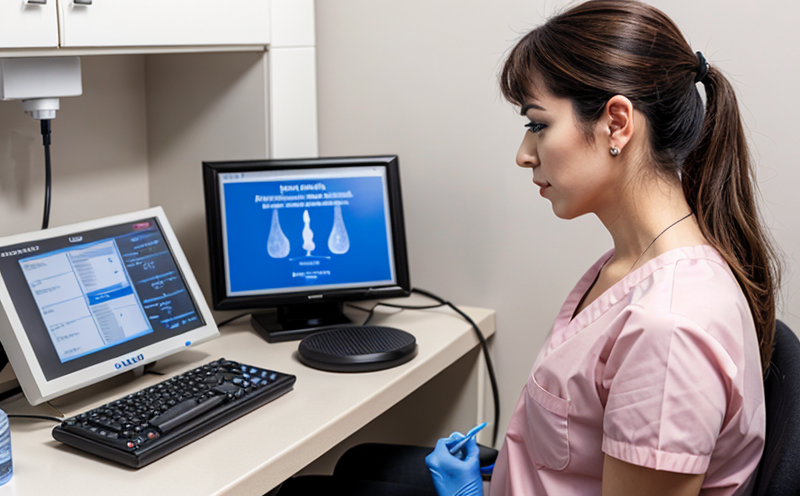Endocrine Disruption Biomarker Testing in Aquatic Models
In recent years, the field of environmental toxicology has seen a significant shift towards understanding the impact of chemical exposure on aquatic ecosystems. Endocrine disruption biomarker testing represents a critical tool in this endeavor. This service focuses specifically on identifying potential endocrine disruptors (EDCs) that can affect the hormonal balance and reproductive health of aquatic species.
The test involves exposing selected aquatic models to samples from various sources such as wastewater, agricultural runoff, or industrial effluents. These exposures are designed to mimic real-world conditions where contaminants might enter water bodies. By monitoring changes in hormone levels and other biomarkers over time, we can assess whether these chemicals are indeed disrupting endocrine functions.
Aquatic models used for this testing include fish species like zebrafish (Danio rerio), medaka (Oryzias latipes), or even amphibians such as Xenopus laevis. These organisms provide valuable insights because their early life stages are particularly sensitive to hormonal perturbations, making them ideal candidates for detecting subtle changes indicative of EDCs.
The process begins with careful selection and preparation of the test subjects. Specimens undergo rigorous handling procedures to minimize stress, which could otherwise confound results. Once prepared, they are exposed to different concentrations of the sample being tested according to predefined protocols. After exposure periods, blood samples or tissues containing relevant glands (like pituitary) are collected for analysis.
Analysis typically involves advanced analytical techniques such as enzyme-linked immunosorbent assays (ELISAs), liquid chromatography tandem mass spectrometry (LC-MS/MS), and nuclear magnetic resonance spectroscopy (NMR). These methods allow precise quantification of specific hormones or metabolites known to be sensitive indicators of endocrine disruption.
Interpreting the data requires expertise in both toxicology and biology. Our team uses sophisticated software tools to normalize findings across samples, ensuring accurate comparisons between treated groups and controls. Reporting includes detailed descriptions of methods employed along with statistical analyses demonstrating significant differences observed due to chemical exposure.
This type of testing is crucial for several reasons:
- To comply with regulatory requirements set forth by organizations like the European Chemicals Agency (ECHA) or the U.S. Environmental Protection Agency (EPA).
- To support companies in identifying potential risks associated with new products before they enter marketplaces.
- To aid researchers studying environmental impacts of various pollutants on aquatic ecosystems.
Applied Standards
| Standard | Description |
|---|---|
| OECD TG 443 | Determination of Endocrine Disruptors in Aquatic Organisms by the Estrogenic Activity Assay. |
| ISO 12769-2 | Environmental Chemistry - Determination of Bisphenol A (BPA) in Water by Liquid Chromatography-Mass Spectrometry (LC-MS/MS). |
| Protocol | Description |
|---|---|
| Sample Dilution Series | A series of dilutions prepared from the original sample to cover a wide range of concentrations. |
| Control vs. Treated Groups | Two groups of aquatic organisms—one exposed to the test substance and another kept under normal conditions as a reference point for comparison. |
Why Choose This Test
The Endocrine Disruption Biomarker Testing in Aquatic Models is essential for several reasons. Firstly, it provides unparalleled insight into how specific chemicals interact with aquatic life at the molecular level. Secondly, compliance with international regulations mandates rigorous testing procedures to ensure safety across all stages of product development and environmental release. Lastly, this service enables companies to proactively address potential liabilities while also contributing positively towards sustainable practices.
Our state-of-the-art facilities equipped with cutting-edge technology allow us to deliver reliable results consistently. With experienced scientists specializing in endocrinology and toxicology, we bring a wealth of knowledge to every project undertaken. Additionally, our commitment to quality ensures that all tests adhere strictly to relevant standards ensuring credibility and trustworthiness.
The results from such testing can have far-reaching implications beyond mere compliance checks. They contribute significantly towards understanding broader ecological impacts and form part of ongoing efforts aimed at protecting vulnerable environments against harmful substances.
Customer Impact and Satisfaction
- Ensures regulatory compliance with international standards like OECD TG443 or ISO 12769-2.
- Aids in product development by identifying potential risks early on, thus reducing costs associated with later stages of testing.
- Supports informed decision-making processes for stakeholders involved in environmental protection initiatives.





